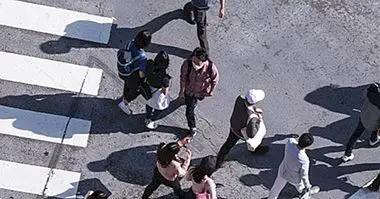Threat of stereotype: unconscious self-discrimination
Is the work and academic performance conditioned by the stereotypes that still prevail in our society? Why are there certain professional fields in which the differences between men and women is so marked?
The Theory of the Threat of Stereotype tries to give an answer or explanation to these phenomena that, despite the progress of society, still persist regardless of the age of the people and the field of study or work in which they are developed.
- Related article: "The 16 types of discrimination (and their causes)"
What is the threat of the stereotype?
The stereotype concept refers to a series of generalized beliefs, or overgeneralizations, resistant to the change that society makes in relation to the members of a group or group whose members are distinguished by some feature or particular condition.
Usually, these stereotypes are related to aspects such as race, culture or nationality, sex, social status or religion. And although these popular beliefs can be positive, the reality is that in most cases they have a very important negative component.
Based on this concept, several researchers have developed what is now known as the Stereotype Threat Theory. This theory points to the fact that, when a person or group of people unconsciously assume the negative aspects of the stereotypes linked to their condition , not only affects him psychologically, but it can have an important repercussion on his academic and work performance.
- Maybe you're interested: "The 7 types of anxiety (causes and symptoms)"
The research of Claude M. Steele
There are many researches that have tried to firmly establish this theory, as well as the causes of this phenomenon. In this article we will focus on the research of the psychologist Claude M. Steele, since, of all the existing ones, they are the ones that have the greatest impact worldwide.
Steele was devoted to studying how these stereotypes affected academic performance and productivity of female students and minority ethnic groups, specifically African-Americans.
The results obtained by Steele and his collaborators establish that those groups "victims" of the negative stereotypes, obtained a worse performance in those tests that activated or promoted these stereotypes. For example, mathematical tests that calculated differences between men and women or between African Americans and American whites.
Also, Steele also discovered that this Stereotype Threat it also influenced the development of identity . That is, for a student to worry about the performance of a given subject, it is necessary to feel identified with it. This process of affinity with the subject is directly related to the achievements obtained in it, so if these scores are negative there will be a lack of interest of the student in these subjects.
This phenomenon could explain the predominance of women or men in certain university studies , as well as in some professional or research contexts.
- Related article: "Cognitive biases: discovering an interesting psychological effect"
Her CARACTERISTICS
As a result of his research, Steele drew up a list of its own on the characteristics that the Threat of the Stereotype must have in order to be considered as such:
- The Threat of the Stereotype affects all groups . That is, to any group of people affected by a series of negative stereotypes.
- The components of these groups can experience this threat in various ways and degrees. This will depend on the stereotype content of your personal context.
- The more difference there is between the person affected by the stereotype and the rest of the group, the more relevant the effect of this will be. For example, a single woman in a group of men .
- It is not necessary for the person to assume these stereotypes, or believe in them or their veracity to suffer the Threat of the Stereotype.
- Attempts to fight the stereotype can become unfavorable since they can generate feelings of anxiety by constantly avoiding carrying out behaviors that support these beliefs.
Evidence against this theory
Although the results obtained in the studies about the Threat of the Stereotype have been used as a possible explanation to the differences in performance between men and women, both in some academic circles and in other sports circles; Cognitive psychology researcher Tom Stafford, of the University of Sheffield, insists that there is no evidence of the existence of this phenomenon.
Strafford focused on women's performance in chess tournaments. According to him, previous studies have found that the threat of stereotype is activated in chess players when compared to male players. However, after collecting data from more than 5.5 million chess games from international tournaments, no evidence of an effect of the Stereotype Threat was found.
Conversely, the players came to exceed expectations when competing against men . Although their analysis contradicts the specific mechanism of influence of gender stereotypes, the persistent differences between male and female players suggest that there are systematic factors that have not yet been discovered.
Can this influence be avoided?
As a result of the investigations that support the existence of the Threat of the Stereotype, a series of suggestions or recommendations so that their effect on students can be considerably reduced .
One of these techniques is to clearly state to the students that their nerves before a certain test is due to their awareness of these negative stereotypes, not to their actual ability to execute the exercise correctly.
This explanation gives an explanation that attributes its performance to an external factor that can be ignored or improved, thus decreasing your anxiety levels .
A second way to address this Stereotype Threat is to provide students with alternative role models. By using examples of people who, despite being victims of these stereotypes, have achieved their goals in those areas where they were considered a minority.



















